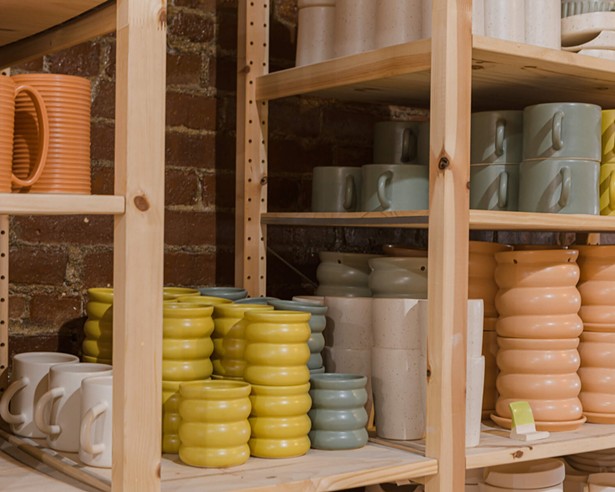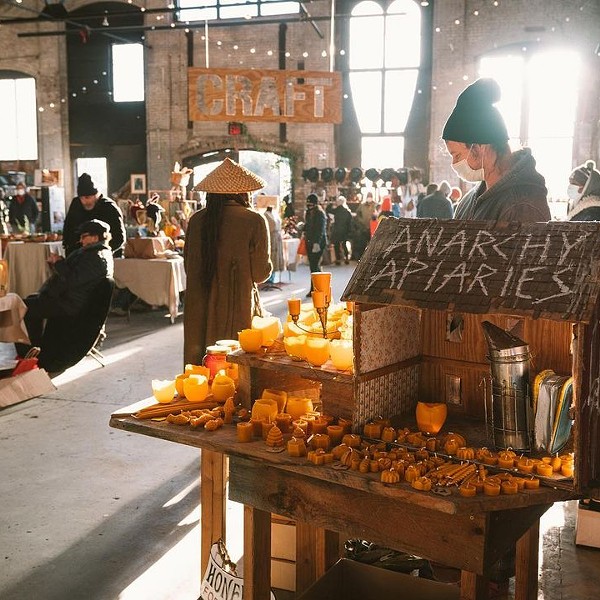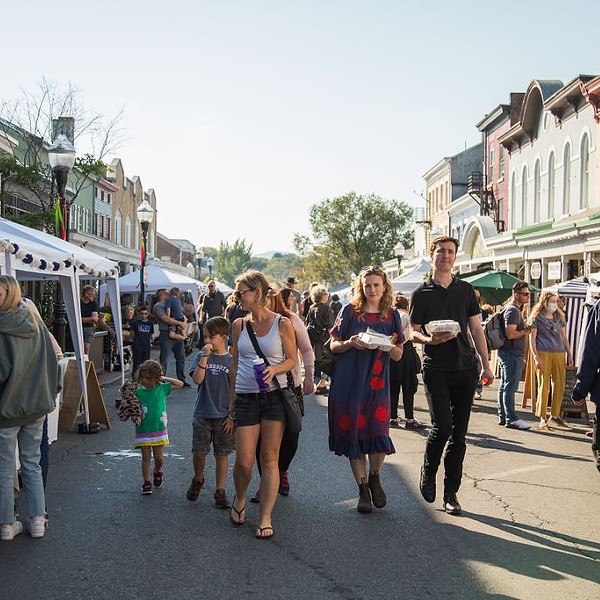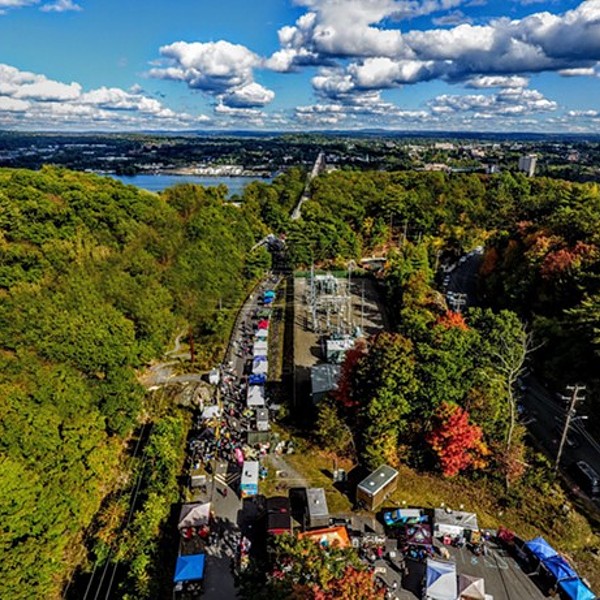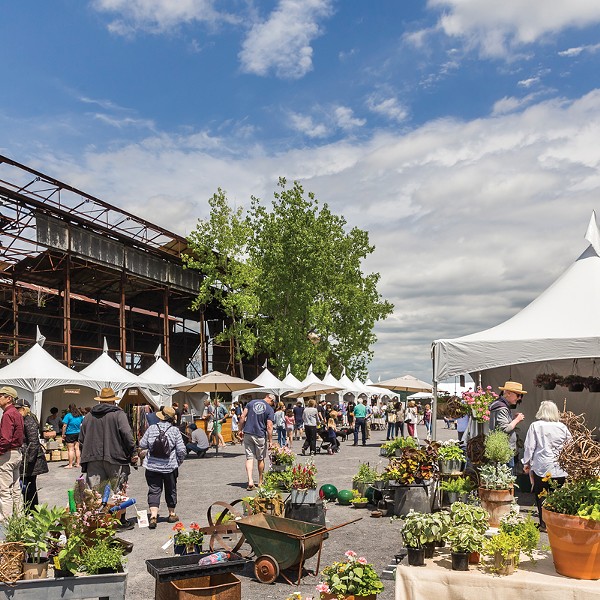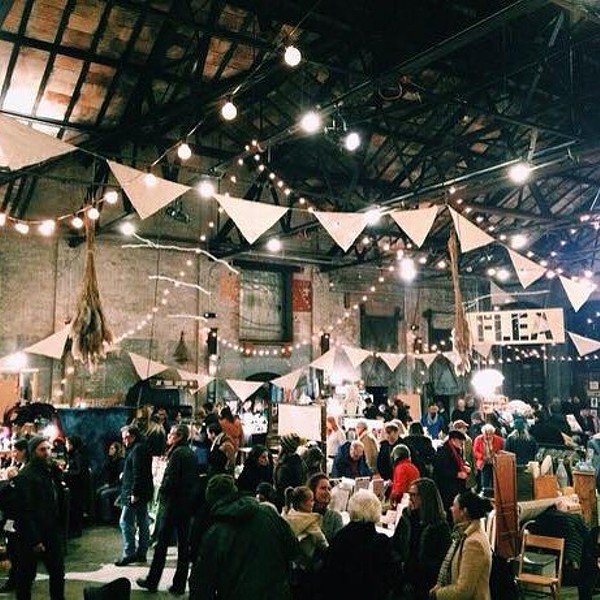The pandemic changed everything: businesses closed, schools shut down, unemployment surged, hundreds of thousands of Americans died. Almost everything we did happened at home for some if not most of a full calendar year, from working to recreating and shopping.
At first, it seemed like Big Box stores and corporate titans would be the last businesses left standing when the dust settled. But it soon became clear that amid the widespread devastation, isolation, and destruction of the pandemic, people were craving more humanity and care than those behemoths could deliver.
Amid economic challenges and social movements that focused attention on overlooked artisans and creators, it seemed people also wanted to support individual creatives, for a variety of reasons.
Creatives responded, in a word, creatively. We reached out to a variety of makers and markets to hear how they pivoted and fared. Please read on for the insights and experiences.
Solitary Creatives
The past year clarified a lot for both creators and customers who seek out their wares. From soap and candle makers to jewelers and sculptors, makers found that across the board, the public wanted to buy what they were selling.
“I was very surprised at how much people were suddenly spending on my work,” says Alexis Tellefsen, the artist behind the popular small-batch ceramics tableware brand Tellefsen Atelier in Middletown. “We were open for a year prior to the pandemic, and I spent a lot of my time at that point creating work, but also teaching workshops and selling at markets. I sold the vast majority of my work at markets and festivals.”
Once the pandemic hit, Tellefsen pivoted completely online, and had enough wholesale clients to keep her afloat until she got into the e-commerce groove.
“I have been so lucky,” she says. “My sales have actually grown, and I plan to continue working in the way that I have been. I devote all of my energy to creating for a few months, then I put all of my work for sale, it sells out in a month or two, then I got back to creating. The community of makers I’ve found online has also been incredible, and we all take care of each other, promote each other’s work and check in on each other to make sure we’re not burning out.”
Sara Golden, the designer behind Sara Golden Jewelry in the Catskills, also notes that the surge of interest in her work has been surprising and extraordinarily gratifying.
“Before the pandemic, most of my sales were made doing markets, especially during the summer,” Golden says. “I’d spend most of my time traveling around the Hudson Valley and Brooklyn, but I did have wholesale relationships as well. When everything shut down, I knew I had to shift everything online, but I was definitely nervous about the impact it would have, knowing that people were going to be struggling financially, and probably not looking to buy jewelry.”
But after she migrated her sales channels online, the long, slow decline she was expecting never came to fruition, although she acknowledges her business was impacted somewhat, especially at first.
“I found that people were actually buying my more expensive pieces,” she says. While stimulus checks likely played a role for some, offering the still-employed a new influx of expendable income, cash to burn was not the only thing driving sales. “It seems that people really want to make a connection with the person behind a brand,” Golden says. “They want to invest in quality jewelry that will withstand the test of time.”
Golden turned down summer markets, planning to return to in-person markets in September, when she projects that even children will be vaccinated. Other makers, like Alysia Mazzella, a Newburgh candlemaker, are equal parts hesitant and excited to return to in-person events.
“There are a couple of markets I love to participate in and am excited to return to, but I don’t see myself participating in as many as I have in the past,” she says, explaining that she has used this time to ramp up her online sales presence. “My beeswax candles are first and foremost rooted in function: to hold time and give clean, long-burning nightlight. New customers saw quarantine as a wake-up call to that thing they’ve always said they would do. Especially in relation to slowing down and being more disciplined about free time.”
New Purpose
In response to the reset, some makers have used the pandemic as an opportunity to not just explore new sales channels, but transform their businesses.
“When COVID hit, we shut down our office, because we didn’t want to endanger our employees,” says Bill Hovard, managing director and founder of Hudson Made. “But as a soap company, I felt like we had to do something. I had this enormous inventory, so I decided to create a promotion where for every bar I sold, I’d donate one to a charitable organization or medical group.”
To fund the initiative, Hudson Made essentially stopped advertising. The response has been so positive—incredibly, sales are up about 25 percent, year-over-year—Hovard plans to continue the promotion even when things return to “normal.” He also decided to buy a historic building at 354 Main Street in the Village of Otego, and move the production and retail operation from Andes.
“It’s a gorgeous space, and while I don’t think it will change in-person sales numbers, because of its size, we’ll be able to essentially use it as a retail store and an open studio,” Hovard explains. “We see it as a way to celebrate not just Hudson Made but the creative community in general.”
Group Festivals and Markets
While individual makers relied on a patchwork of in-person events for the vast majority of their sales, the events themselves depended on them completely.
“Before the pandemic, our business had just come off a record year,” says Brad Ford, founder of Field + Supply. The craft fair hosts two annual markets at the Hutton Brickyards in Kingston, pulling together between 180 and 200 individual vendors producing everything from furniture and home accessories to apothecary, pantry items and fashion. “Honestly, we hoped we could still do our big Memorial Day market, but by April, we realized we had to pivot to virtual.”
Ford, who sees Field + Supply as a business that helps a lot of small businesses run, decided to if not replicate the in-person experience online, at least deliver a true, immersive experience.
“We launched the site in July, and in addition to our usual curated shopping experience, we included a playlist, recipes from chefs and producers we work with, a field guide to safe in-person shopping, and places to stay in the Hudson Valley during COVID.”
But without the income from vendor participation fees and sponsorships, Field & Supply has been hit hard. “Thankfully, we are emerging from this, and we’ve launched a Field + Supply pop-up at ABC Carpet & Home, which has done very well,” Ford says. “Until the Fall, when we anticipate that we will be completely back, we’ll be doing other pop-ups across the state. The one we’re really looking forward to will happen on Sundays this summer in Kingston.”
He’s referring to F+S Mini MRKTs, a scaled-down version of their biannual fair that will feature a selection of Field+Supply makers, artisans, and designers at the corner of Crown & John Street on select Sundays this summer. The F+S Mini Markets will be open from 10am-4pm on May 30, June 20, July 4, August 1, August 15, and September 5.
A Fixed Existence
The nomadic Phoenicia Flea, a Hudson Valley mainstay that blossomed into a national market movement spearheaded by James Anthony, was also initially devastated—but then transformed—by the changes the pandemic brought.
“The entire season was canceled, which didn’t just affect the Phoenicia Flea, but the markets that we created out west in recent years, with the Mojave Flea, the Fog City Flea, the Southern Flea,” he says. “And while I saw a lot of people pivoting to the digital space and succeeding there, I wasn’t personally interested.”
Then, Anthony got a call from a property in Palm Springs, with 14 little shops in one building. There was a huge parking lot, and enough room inside to recreate the concept of the Flea, while maintaining social distancing.
“The Shops was extraordinarily successful, and we were able to bring in individual makers we worked with, including Highlands Foundry and the Village Common in the Hudson Valley, and people really responded,” he says. “I feel like the pandemic has reminded people to focus on meaningful things, and that includes art and crafts, handmade objects. We all now realize how fragile everything is.”
He is ready to re-introduce the Phoenicia Flea to the Hudson Valley, starting on July 3, for a weekend at the Catskill Brewery. Other events will follow around the Valley, and in the meantime, he’s looking for a permanent, sprawling brick and mortar in the Valley, so that the Flea experience can be year-round here, as it is in Palm Springs.
Online Marketplaces
Digital spaces devoted to local makers have flourished, in what creators see as a boon for all.
Silda Wall Spitzer, founder of the curated online marketplace New York Makers and Silda’s Jam Team, says she saw the community of creators kick into high gear in response to the pandemic, creating masks for hospital workers and everyone else amid a shortage, holding virtual workshops, and strengthening their social media and e-commerce skills. The public responded, she says. (Full disclosure: I write for New York Makers’ publishing arm).
“The importance of small, local makers and sustainable community seemed to resonate with customers in a new, more powerful way,” Spitzer explains. “Many of our makers had their best holiday seasons to-date, even without the opportunity to participate in markets—an amazing outcome of such a challenging year!”
Tom Jacoby, a publisher of Edible Manhattan, Edible Brooklyn, and Edible Hudson Valley, was born in Columbia County, and has seen the Hudson Valley go through multiple booms and busts. But one thing that remains steady is the residents’ love of local.
“I knew through our magazines how connected people feel to local producers, and my team and I realized that there was an opportunity to link them, not just through information, but commerce,” he says, describing the founding ethos of Doorstep Market, which launched mid-pandemic. Jacoby and his team have gathered 1,500 hand-picked makers in five markets (the Hudson Valley, New England, South X Southeast, CA Southland, the Bay Area), making their products, stories, and visions accessible to anyone. The products run the gamut from health and wellness to food, fashion, and home, and all transactions are made through the site (except for CBD and alcohol, where they are directed to the producer) and fulfilled by the producer.
“We wanted to give people a way to create personal relationships with makers, and help makers find a wider audience,” Jacoby says. “In many ways, what we’re doing is providing people with the small-scale retail shops that were displaced by Big Box stores. It just happens to be online.”
Artists are, by nature and definition, adaptable, solutions-oriented and creative. But all of the creativity in the world can’t create customers. If hearing about these makers, and their incredible flexibility, determination, and in some cases, growth, amid the pandemic, then consider supporting them. They still need your help.
According to a recent Global State of Small Business Report from Facebook, which surveyed more than 35,000 small businesses impacted by COVID-19 across 27 countries, New York State had an especially high rate of small business closures due to the pandemic. In the Empire State, about 31 percent of small businesses shut their doors, compared with 22 percent across the US.
Let’s change that picture, one bar of soap at a time.
Microloans Give Makers a Big Lift
Since 2013, the Hudson River Exchange built its business model on the importance of celebrating and supporting the work of small producers.
Amid the pandemic, co-founder Stella Yoon decided to shift the Exchange’s mode of selling, while maintaining, even doubling down, on the Exchange’s ethos. Yoon moved the Exchange from a fixed physical space to a more nomadic and digital existence, managing to launch online in time for Thanksgiving and the surge of holiday season activity.
“We launched the online shop with 30 makers, but over the years I have worked with hundreds,” she says. “We have experimented with all kinds of formats, letting one maker take over our space to see what it would feel like to open their own shop, then working with them one-on-one if and when they did go ahead and launch.”
Yoon saw how some makers thrived during the pandemic, while others had to shut down their businesses to homeschool their children or deal with a health crisis. As she worked on reshaping how she could support and sell makers’ wares, she also decided to take a further step and set up a microloan program for makers who might be having trouble pivoting their sales channels, or growing their business during the pandemic.
“Five percent of all online sales are contributed to the fund, and a donor, The Spark of Hudson, seeded the program with $2,500,” Yoon explains. “I think a lot of us found ourselves evaluating our roles in the community, and looking at equity and opportunity, and wanting to do more with everything we have. I really wanted to do more, and this program allows me to support makers who I see as having a lot of promise and talent, and just need a leg up.”
As of now, she has funded two projects, and hopes to fund a lot more. “We will launch a membership opportunity, and I expect there to be more applications for microloans, and a formal vetting process. I feel lucky to be in the position to help, and excited to see them flourish as they invest in their dreams.”
The microloans are just that—small boosts—that require payback eventually, without interest. But those interest-free boosts may mean the difference between a maker soaring, or closing up shop.







